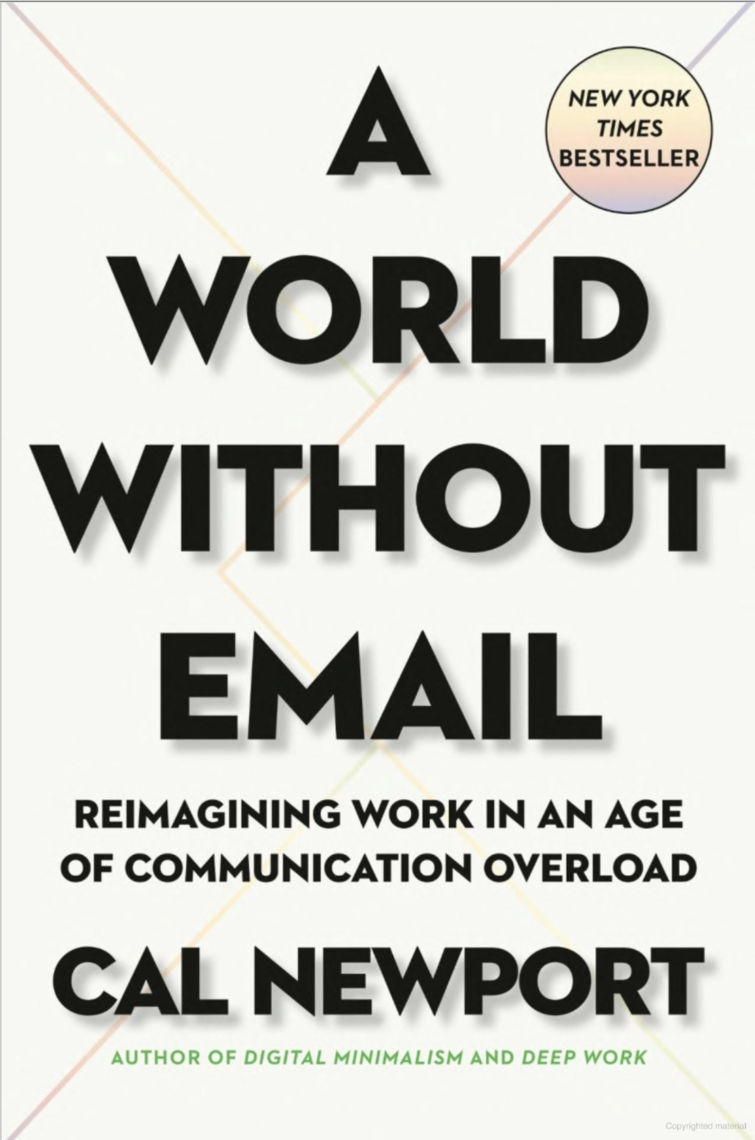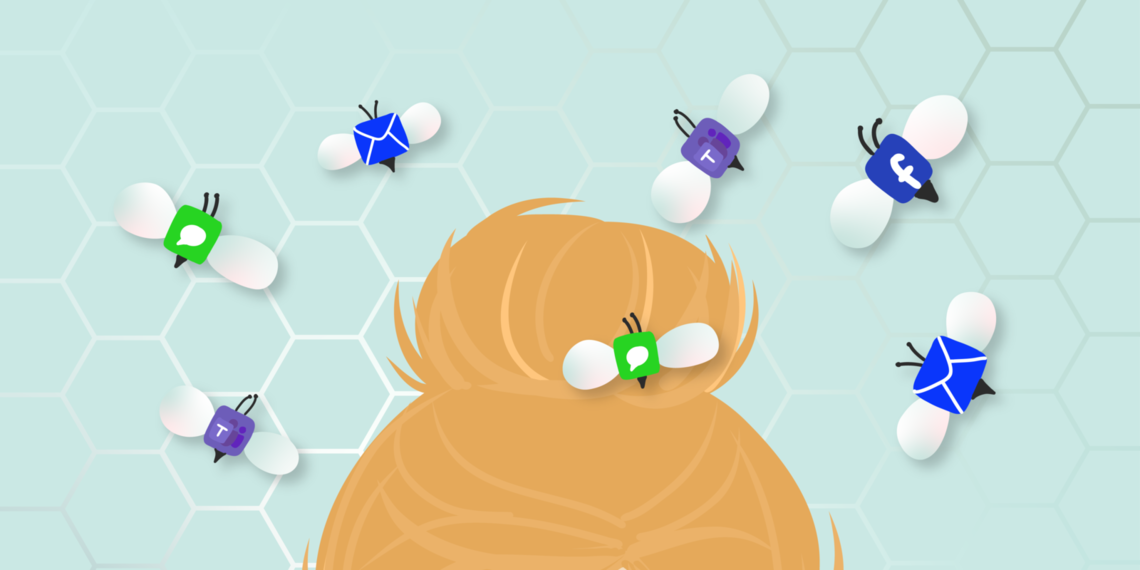A World Without Email

Author Cal Newport reimagines work in an age of communication overload in "A World Without Email"
The Chief Medical Officer Executive team recently read the book together as a book club.
here’s too much noise in our modern work world. Just as I (Tom) write, I’ve heard my phone go off four or five times. We’re in a technology environment that is demanding we switch our attention constantly - email, pages, texts and more. In his book A World Without Email, Cal Newport explores how our current work culture of constant communication can damage productivity, profitability and mental health.
When clinicians are overwhelmed with too much noise and communication, it can lead to serious consequences. The ability to concentrate and focus on a patient without the constant ding of notifications and interruptions is a matter of safety. Understanding the post-email world described by Newport may help us find new ways to deliver high-quality care in an efficient and healthy way.
The Hyperactive Hive Mind
Newport begins by introducing concept of “hyperactive hive mind,” defined as a workflow dominated by unstructured and unscheduled digital messages that come through emails, texts, alerts and instant messages.
I (Sach) believe that one of Newport’s central hypotheses is that the current state of email and its associated workflows impacts our soul. It is almost a soul-crushing workflow, because of how our primitive brains are wired. As social beings, we feel a responsibility to each other. Our kinship is built around our paleolithic needs of survival. We have a wired need to respond to each other because we know one day, I’m going to need help. I’m going to need to rely on one of my colleagues.
When we get these emails, we get this strong trigger that I have to respond. When we have unanswered messages, it creates anxiety that calls back to the environment that shaped our premodern brains.
As Newport writes “As long as we remain committed to a workflow based on constant, ad hoc messaging, our paleolithic brain will remain in a state of low-grade anxiety.”
Medicine Meets the Hyperactive Hive Mind
The guilt associated with not completing tasks is a type of moral distress. It’s a classic set-up: I (Amy) should be doing X but I can’t. Answering emails promptly and thoughtfully; responding to every myChart message in a kind and thoughtful way; these are things that recognize that the person on the receiving end is a human. Taking care of others is why we chose jobs in health care. But what we’re forced to do is respond quickly, or ignore it and hope it goes away, or tell the patient to make an appointment. It doesn’t feel like taking care of others, and that creates guilt.
That guilt is amplified because people who go into health care careers are often perfectionists. That perfectionism is challenged by the actual workload of medicine. There is a sense of pride in getting the work done assigned to you, in this case email or myChart messages, or pages or telephone messages. But does completing 30 emails or messages actually move you forward in the work you want to do? Is it thoughtful care of patients, or completing a project that advances something?
Type A, meet Gen Z
Those of us who teach see this problem compounded in our trainees. These digital natives have always had access to the sum total of human knowledge in their pockets. That ability to connect with others has always been constant. Right now, I (Mark) can communicate with anybody in the world. When I was younger, if I wanted to speak to my family in Scotland, I had to remember to call when I got home or find a payphone. I had to make a note to myself to remember. Our Gen Z trainees aren’t used to doing something later or leaving themselves a note because they can do everything now.
When this concept of “now” is paired with our medical hierarchy, it compounds the problem. Our trainees are used to responding to someone higher in the hierarchy. The messages they have received their whole life is that they need to keep 20 plates spinning at once. That multi-tasking has been rewarded as high achievement. They’re used to multiple things being due in a half hour and just getting it done. Its very hard to convince people who have been very successful by any metric that the multi-tasking isn’t working, and is indeed, likely harming their ability to be the kind of providers they want to be – thoughtful, focused, and safe.
We’re reached our boiling point
I (Tom) worry about the frog analogy, where you’re slowly being boiled and you can’t keep up. I think that is what working in health care feels like many days. We have reached a boiling point when it comes to communication. Something has to change to improve collaboration and productivity for the sake of our mental health.
That change has to be driven from the bottom up, from the nurses and techs and doctors who are working together every day. We, as hospital leadership, simply don’t understand the strain of working in a medical record, doing dictations, rounding and receiving messages at all times.
But as leaders, we have to alleviate fear about reducing or changing communication. We have to give workers permission to try new forms of working together without fear of failure. As we work toward getting rid of the hyperactive hive mind, leaders must provide a safety net.
We’ll share more on the experiments to provide a safety net in part 2.
Tom Miller
Sachin Apte
Amy Locke
Mark Harris
To disagree means failing to agree. Synonyms include to contradict, challenge or debate. Synonyms do not also have to include to argue, quarrel, dispute, bicker or clash. Pediatric intensivist Jared Henricksen shares the best path forward when words become clouded with emotion.
How do I share employee engagement feedback with my team? Chief Wellness Officer Amy Locke, Resiliency Center director Megan Call, Utah Health Academics HR leader Sarah Wilson, and Organizational Development Director Chris Fairbank explain when and how to talk with your team.
Expert communicators Emily Izzo and Bridgette Maitre share how to ask open-ended questions to encourage conversation and promote meaningful connection.
